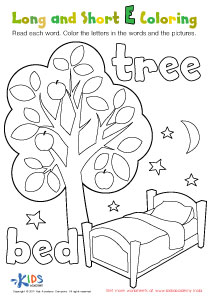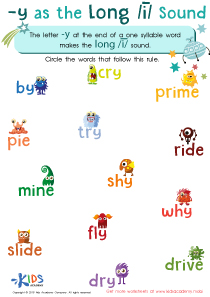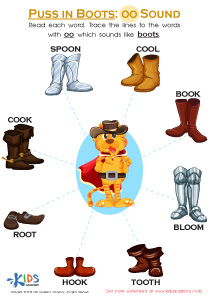Normal Two Vowels Together Worksheets for 6-Year-Olds
3 filtered results
-
From - To
Introducing our engaging and educational "Normal Two Vowels Together Worksheets" specifically designed for 6-year-olds! These worksheets are meticulously crafted to introduce young learners to the concept of vowel pairs in a fun and understandable manner. Through a series of interactive activities, children will explore how two vowels work together to create unique sounds, enhancing their reading and spelling skills. Perfect for both classroom and home use, our worksheets are tailored to captivate the interest of young minds while reinforcing foundational literacy skills. Dive into the adventure of vowels with our Normal Two Vowels Together Worksheets for 6-Year-Olds, and watch your child's language abilities flourish!
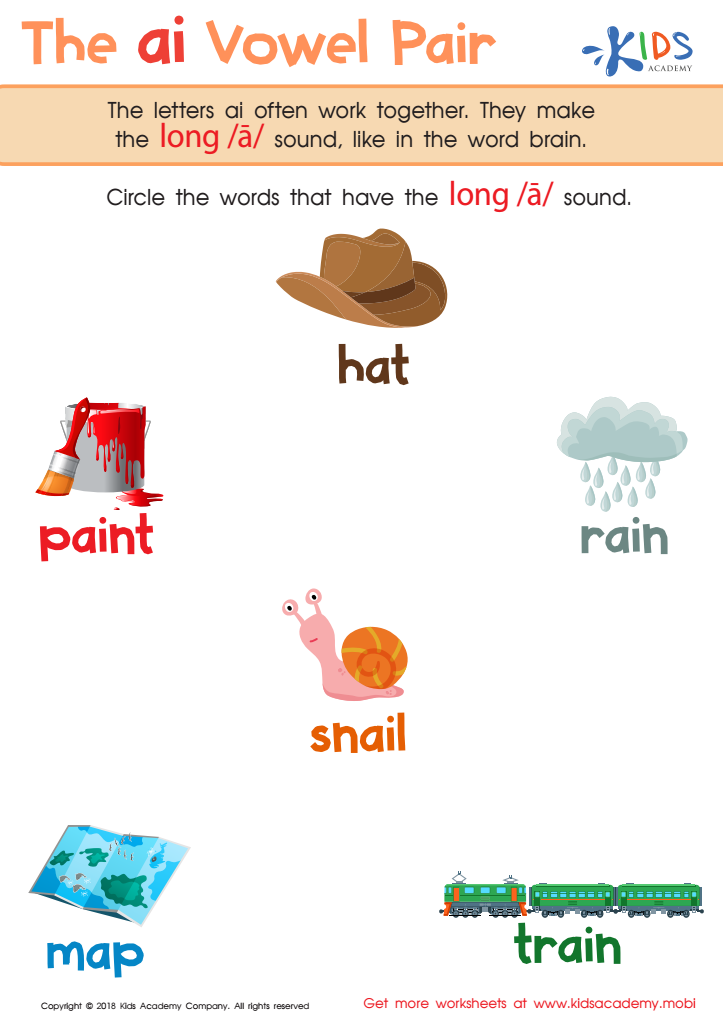

The AI Vowel Pair Worksheet
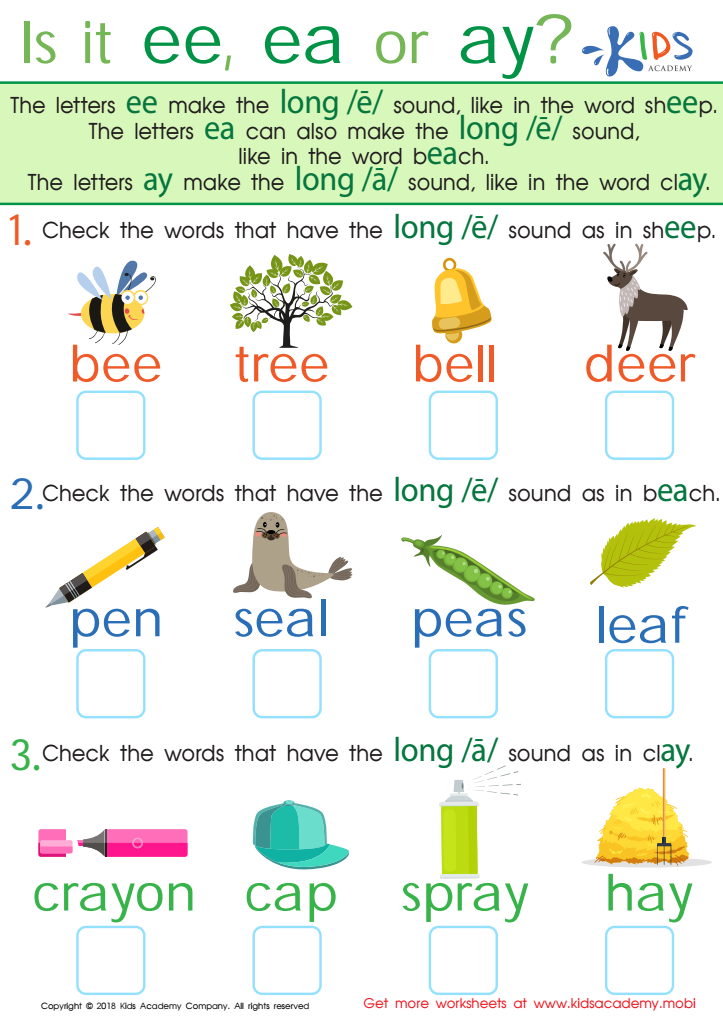

Is It EE, EA, or AY? Worksheet
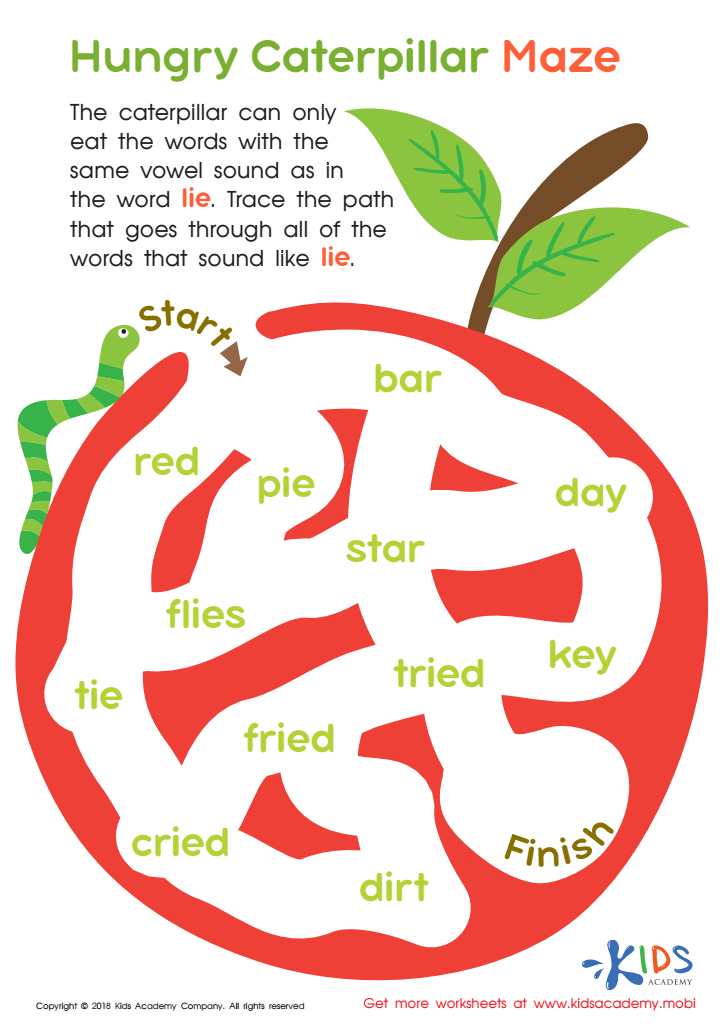

Hungry Caterpillar Maze Worksheet
Normal Two Vowels Together worksheets are an essential educational resource for 6-year-olds as they embark on their journey of literacy and language development. These worksheets are specifically designed to cater to the unique learning needs and capabilities of young learners, making the complex concept of vowel pairs more accessible and engaging.
The importance of mastering Two Vowels Together cannot be overstated for 6-year-olds. This foundational skill is crucial for decoding words, enhancing reading fluency, and boosting comprehension. Normal Two Vowels Together worksheets offer a structured and systematic approach to learning, providing children with ample opportunities to practice and reinforce their understanding of how two vowels can work in unison to produce a single sound.
Through a variety of fun and interactive activities, such as matching games, fill-in-the-blanks, and word hunts, these worksheets make learning enjoyable and less intimidating for young students. This hands-on experience not only aids in the retention of knowledge but also fosters a love for reading and learning.
Moreover, Normal Two Vowels Together worksheets for 6-year-olds are designed to gradually increase in complexity, allowing children to build their confidence as they progress through different levels of difficulty. This step-by-step approach ensures that children are not overwhelmed, promoting a positive and fulfilling learning experience.
In summary, Normal Two Vowels Together worksheets are invaluable tools that support the literacy development of 6-year-olds, making them an indispensable part of early childhood education.

 Assign to the classroom
Assign to the classroom


